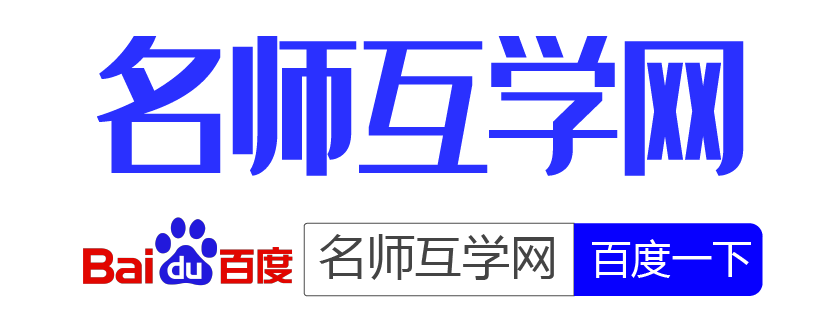题文
In a recent study, researchers have estimated the energy required to produce bottled water, including the energy required to manufacture plastic, make the plastic into bottles, process the water, fill and seal the bottles, transport the bottles, and chill the bottles for use. Combining all the energy input totals for treatment and distribution, researchers found that producing bottled water requires between 5.6 and 10.2 million joules(焦耳) of energy per liter, depending on transportation factors. That's up to 2, 000 times the energy required to produce tap water.To break down the energy requirements, researchers found that producing the plastic bottles and transporting the bottles greatly dominated(控制) the energy input. Although some companies are experimenting with producing lightweight bottles or using recycled materials, the researchers calculated that the manufacturing cost is about 4 million joules of energy per plastic bottle weighing 38 grams, and the cap weighing 2 grams.
“Our previous work had suggested that bottled water production was an energy intensive process, but we were surprised to see the results, ” the researchers said.
Transportation costs vary depending on the distance and mode of transport and both factors depend on the type of bottled water. There are two main kinds of bottled water in the US:” spring water” which comes from an underground spring and “purified water”,which is city tap water that has received further treatment. For purified water distributed locally by truck within Los Angeles, the total transportation energy is about 1.4 million joules per liter. In the second situation, spring water shipped from Fiji (such as Fiji Spring Water) across the Pacific to Los Angeles, and then delivered locally by truck requires about 4 million joules per liter for transportation. For the spring water, the transportation energy equaled (in the case of Fiji) the energy required to produce the bottle.
With this data, the researchers hope that future studies will have the ability to make specific estimates for different situations, and possibly find ways to cut energy costs.
小题1:From the first Paragraph we can know that the energy required to ______.A.produce bottled water includes the energy required to drink itB.distribute bottled water includes the energy for producing the bottlesC.distribute bottled water is much smaller than the energy for treating itD.produce bottled water is much smaller than the energy for producing tap water小题2:To reduce the energy required to produce bottled water, some companies are trying ______.A.to fill tap water into the plastic bottles directlyB.to replace the plastic bottles with metal containersC.to produce lightweight bottles with recycled materialsD.to use bicycles to transport and deliver bottled water locally小题3:What's Paragraph 4 mainly talking about?A.Treatment of bottled water needs no energy input at all.B.Bottled water production is an energy intensive process.C.Transportation of bottled water takes up the most energy input.D.Production of the plastic bottles greatly dominated the energy input.小题4: We can infer from the passage that ______.A.there are two main kinds of bottled water in the USB.world consumption of bottled water has been increasingC.transportation costs have something to do with the mode of transportD.bottled water produced in Spring is more expensive than purified water小题5: What's the main purpose of the passage?A.To help consumers themselves make more environmentally sustainable choices.B.To advise the government to take severe measures to stop producing bottled water.C.To urge the consumers to drink tap water instead of bottled water for the sake of the earth.D.To try the best to find ways to produce bottled water cheaply and quickly for the companies. 题型:未知 难度:其他题型
答案
小题1:B
小题2:C
小题3:C
小题4:B
小题5:A
解析
研究人员发现瓶装水所消耗的能量是自来水的2000倍,进一步研究发现处理水不需要什么能量,消耗的大量的能量都用在了装水和运水上,研究人员希望通过研究找出削尖能源消耗的方法,作者的目的是希望通过这篇文章引起大家对这件事的注意,自觉采取措施保护环境。
小题1:细节题;从第一段的句子:Combining all the energy input totals for treatment and distribution, researchers found that 可知瓶装水的消耗分两部分:处理和运送,选B
小题2:细节理解题:从第二段的句子Although some companies are experimenting with producing lightweight bottles or using recycled materials, 可知为了减少生产瓶装水需要的能源,很多公司使用回收材料做的轻的饮料瓶,选C
小题3:段落大意题:文章第三段对第四段的内容进行提示,第四段对比了几种水的运输能量,最后一句以泉水做例子,运送能量就等于生产能量,选C
小题4:推理判断题:最后一段表明研究人员希望进一步研究能找出削减能量的方法,由此可以判断,瓶装水本身就消耗能量,且由于消耗不断攀升,导致问题越来越严重,从而导致这个研究,根据第四段A和C是事实,D是错的,故选B
小题5:写作意图题:文章没有提到政府要停止生产瓶装水,也没有建议只喝自来水,更没有谈到是想帮助有些公司,最后一段提到研究的目的是找到消减能量的办法,选A
考点
据考高分专家说,试题“In a recent study, r.....”主要考查你对 [科教类阅读 ]考点的理解。科教类阅读
科教类阅读的概念:
科教类阅读主要考查考生对书面语篇的整体领悟能力和接受及处理具体信息的能力。试题的取材,密切联系当前我国和世界经济、科技等方面的变化,有关数据的来源真实可信。
科教类文章阅读技巧:
一、材料特点:
这类文章的总体特点是:科技词汇多,句子结构复杂,理论性强,逻辑严谨。具体说来它有以下几个特点:
1、文章中词汇的意义比较单一、稳定、简明,不带感情色彩,具有单一性和准确性的特点。这类文章通常不会出现文学英语中采用的排比、比喻、夸张等修辞手法,一词多义的现象也不多见。
2、句子结构较复杂,语法分析较困难。为了描述一个客观事物,严密地表达自己的思想,作者经常会使用集多种语法现象于一体的长句。
3、常使用被动语态,尤其是一些惯用被动句式。
二、命题特点:
科普类阅读的主要命题形式有事实细节题、词义猜测题、推理判断题以及主旨概括题等,其中推理判断题居多。
三、应对策略:
1、要想做好科普英语阅读理解题,同学们就要注意平时多读科普知识类文章,学习科普知识,积累常见的科普词汇,从根本上提高科普英语的阅读能力。
2、要熟悉科普类文章的结构特点。科普类文章一般由标题(Head line),导语(Introduction),背景(Back ground),主体(Main body)和结尾(End)五部分构成。标题是文章中心思想高度而又精辟的概括,但根据历年的高考情况来看,这类阅读理解材料一般不给标题,而要同学们选择标题。导语一般位于整篇文章的首段。背景交待一个事实的起因。主体则对导语概括的事实进行详细叙述,这一部分命题往往最多,因此,阅读时,同学们要把这部分作为重点。结尾往往也是中心思想的概括,并与导语相呼应,命题者常在此要设计一道推理判断题。
3、在进行推理判断时,同学们一定要以阅读材料所提供的科学事实为依据,同时所得出的结论还应符合基本的科普常识。
科普类阅读应试策略:
【命题趋势】
阅读理解题主要考查考生对书面语篇的整体领悟能力和接受及处理具体信息的能力。试题的取材,密切联系当前我国和世界经济、科技等方面的变化,有关数据的来源真实可信。因此科普知识类文章是每年的必考题。分析历年的科普类文章我们不难发现以下特点:
1、文章逻辑性强,条理清楚,语法结构简单,用语通俗。
2、文章内容注重科技领域的新发现。内容新颖,从而使文章显得陌生,内容抽象复杂。
3、命题方面注意对具体细节的准确理解和以之为依据的推理判断。
4、以人们的日常行为或饮食健康入手,探讨利弊,诠释过程,阐述概念。
【应试对策】
许多考生在考试时感到困惑的是:为什么一些没有超越中学语法和词汇范围的篇章,读起来却不能正确理解,或者要花费很多时间才能读懂呢?这种现象的产生与阅读方法有很大的关系。例如,有的考生在考试时一见到文章就立刻开始读,结果读了半天,还不知道短文讲的是什么,试题要求了些什么,结果浪费了大量的时间,而阅读效果并不好。那么,怎样读效果才好呢?任何一种阅读方法或技巧的使用,都是由篇章特点和试题本身的要求决定的,应根据不同的体裁和试题要求采取不同的策略。
1、浏览。浏览的主要目的就是确定文章的体裁。如果文章属于人物传记、记叙文、故事、科普小品和有关社会文化、文史知识的文章,一般来说,应该先看看文章的试题考查内容,对题目类型做到心中有数,针对不同问题,在通读时有粗有细地去阅读,这样不仅能把握篇章的基本结构和逻辑线索,也能做好有关具体事实信息考查的试题。
2、挖掘寓意,掌握中心思想,推出结论。任何文章,作者在行文时都有一定的写作目的和主要话题。在通读篇章时应该吃透作者的写作意图,抓住文章的主题句,充分发挥自己的想象力和概括力,作出对中心思想的归纳和结论的推断。
3、把握篇章结构,利用上下文进行推测。高考中的阅读理解篇章往往是一个较完整的短文,其结构、思想,前后上下连贯统一。考试时应充分利用这一特点推测一些生词、短语在句中的含义,切莫盲目孤立猜测。
4、综观全篇,前后呼应。这是阅读理解的最后一步,在做完阅读理解题后,要立足于文章整体,再迅速读一遍短文,短文中的问题和答案的设置前后都是相关联的,有着一定的连续性,体现着文章的基本脉络。





